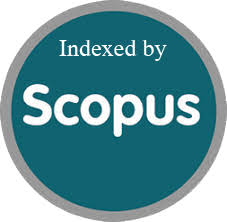Characteristics of Flow Over Normal and Oblique Weirs With Semicircular Crests
Abstract
characteristics of free flow over normal and obliqueweirs with semicircular crests are studied experimentally. For this purpose, forty eightweir models were constructed and tested. The first twelve models were normal weirs inwhich the crest radius was varied three times; 5cm, 7.5cm and 10cm. For each crestradius, the weir height was varied four times; 35cm, 30cm, 25cm and 20cm. Theremaining models were oblique weirs. The oblique angle was varied three times; 60, 45and 30. In weirs of the same oblique angle, the crest radius and weir height were variedsimilarly to those of normal weirs.The experimental results showed that for normal weirs,the discharge coefficient (Cdw) increases with the increase of head to crest height ratio(h/P) for the same height of weir. In case of oblique weirs, it was found that (Cdw)decreases with the increase of (h/P) values and weirs of small oblique angle ( ) give highvalues of (Cdw ).For normal weirs, the discharge magnification factor (QNC /QNS) andperformance increase as values of (h/P) increase. Normal weirs of semicircular crestsperform better than those of sharp crested weirs for all values of weir height and crestradius tested in this study. While, for oblique weirs the discharge magnification factor(QOB/QNS) and performance increased with the decrease of (h/P) values. As (h/P) valueapproaches zero, the discharge magnification factor approaches the length magnificationof the weir. Weirs of small oblique angles give high discharge magnification factor andhigh performance.A simple procedure was applied for the hydraulic design of obliqueweirs. The design method yields the final dimensions of a weir and predicts its headdischargecurve for the whole range of operation.








